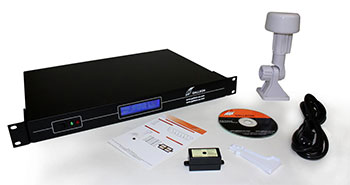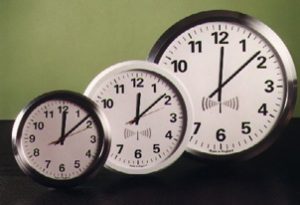Google Finds Innovative Way to Avoid Leap Seconds
| By Richard N Williams
Leap Seconds have been in use since the development of atomic clocks and the introduction of the global timescale UTC (Coordinated Universal Time). Leap Seconds prevent the actual time as told by atomic clocks and the physical time, governed by the sun being highest at noon, from drifting apart.
Since UTC began in the 1970’s when UTC was introduced, 24 Leap Seconds have been added. Leap seconds are a point of controversy, but without them, the day would slowly drift into night (albeit after many centuries); however, they do cause problems for some technologies.
NTP servers (Network Time Protocol) implement Leap Seconds by repeating the final second of the day when a Leap Second is introduced. While Leap Second introduction is a rare event, occurring only once or twice a year, for some complex systems that process thousands of events a second this repetition causes problems.
For search engine giants, Google, Leap Seconds can lead to their systems from working during this second, such as in 2005 when some of its clustered systems stopped accepting work. While this didn’t lead to their site from going down, Google wanted to address the problem to prevent any future problems caused by this chronological fudge.
Its solution was to write a program that essentially lied to their computer servers during the day of a Leap Second, making the systems believe the time was slightly ahead of what the NTP servers were telling it.
This gradual speeding up time meant that at the end of a day, when a Leap Second is added, Google’s timeservers do not have to repeat the extra second as the time on its servers would already be a second behind by that point.

Whilst Google’s solution to the Leap Second is ingenious, for most computer systems Leap Seconds cause no problems at all. With a computer network synchronised with an NTP server, Leap Seconds are adjusted automatically at the end of a day and occur only rarely, so most computer systems never notice this small hiccup in time.

 The service, available by dialling 123 on any BT landline (British Telecom), began in 1936 when the General Post Office (GPO) controlled the telephone network. Back then, most people used mechanical clocks, which were prone to drift. Today, despite the prevalence of digital clocks, mobile phones, computers and a myriad number of other devices, the BT speaking clock still provides the time to 30 million callers a year, and other networks implement their own speaking clock systems.
The service, available by dialling 123 on any BT landline (British Telecom), began in 1936 when the General Post Office (GPO) controlled the telephone network. Back then, most people used mechanical clocks, which were prone to drift. Today, despite the prevalence of digital clocks, mobile phones, computers and a myriad number of other devices, the BT speaking clock still provides the time to 30 million callers a year, and other networks implement their own speaking clock systems.

